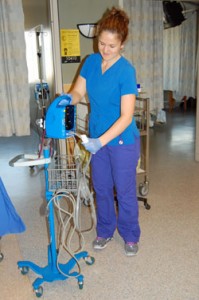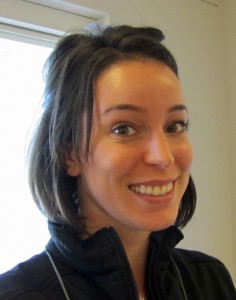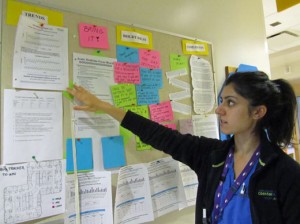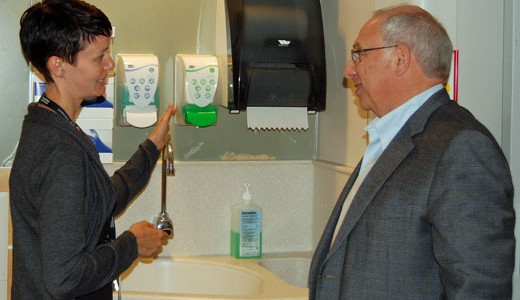Preventing C-difficile: Acute Medicine leads the way at VGH
Eight weeks and no new cases of hospital-acquired C-difficile. That’s right – none. Zero. Zip. Zilch.
Now that’s an achievement worth celebrating.
And celebrate they did. On Thursday, October 4, you could smell the distinct aroma of pizza on the Acute Medicine (T10C) unit at VGH. Chosen as a pilot unit for the hospital’s new C-difficile(CDI) Initiative, the team on T10C has been busy “cleaning up their act” and the results are impressive.
“Before, we were averaging one CDI case every 10 to 14 days,” explains Nicola Chalke, patient services manager.
Reducing CDI cases by half
“Acquiring CDI can be a life-changing event for patients,” says Sydney Scharf, infection control practitioner, “and while the number of CDI cases at VGH has remained steady since 2009, we can reduce our rates.”
The CDI Initiative’s goal is to cut every unit’s number of cases by half. Preventing patients from acquiring CDI is not only key to providing quality care, it will also free beds for other patients in need.
“Studies show that one case of hospital-acquired C-difficile can increase length of stay by six days,” Sydney explains.
Both patients and staff benefit
With the support of their Infection Control partners, T10C rolled up their sleeves to implement several solutions, including hand hygiene and — the big one — de-cluttering.

Lauren Tennant, RN, wipes down a Dinamap vital signs patient monitor. During Acute Medicine’s pilot, nurses were assingned their own Dinamap at the start of each shift, and they were responsible for cleaning between patients.

Carly Derpak, RN and de-clutterer extraordinaire, identified opportunities for cost savings by centralizing supplies.
RN Carly Derpak devoted one entire 12-hour shift to de-cluttering 45 individual patient areas and the step-down area. “I’m a Type A personality, so I’m always de-cluttering, but this time it was a concentrated effort and it created discussion and made people more aware,” Carly says.
Patients and families took note, too. One family member — a pediatrician — was so impressed she wrote a letter praising the unit’s cleanliness and infection control precautions “to protect others from my infectious father and to protect my father from bugs he did not yet have.”
Today, one isolation cart holds supplies and personal protective equipment between each pair of patient rooms, preventing “hoarding” and helping staff quickly locate what they need. “When something happens, the emergency equipment is right there,” says RN Tracy Miranda.
Of course, the primary beneficiaries have been patients, and in more ways than one. Fewer CDI cases also mean staff spend less time suiting up for patients in isolation, and more time providing care.
We’ve only just begun
Still, there’s more to do. Clinical Educator Nureya Khimani is re-organizing Acute Medicine’s supply room, and the unit clerk work areas will be de-cluttered and re-organized, too.
“As always, I’m so proud of my team,” says Nicola. “They see the benefits to patients and to themselves, and I know they won’t stop here.”
Following in T10C’s footsteps, four more teams — Acute Medicine’s other half (T10H), Acute Care Elders, General Surgery and Sub Acute — have embarked on their own journey to reduce CDI. And they’re not alone.
From Dr. Ostrow and our Senior Executive Team through to the frontline, there’s support and an unwavering commitment to the CDI Initiative. It’s time to come clean, you could say, and the initiative will roll out to every VGH unit over the coming months.
Watch for future stories on the CDI Initiative and how our Maintenance and Aramark partners are helping us achieve our goals.

Nureya Khimani, clinical educator, refers to Acute Medicine’s infection control focus board. The team uses this board to stay on track and share ideas and patient and family compliments.

